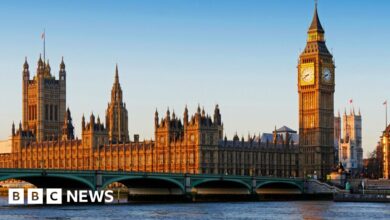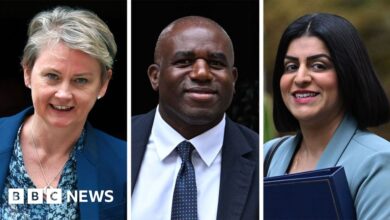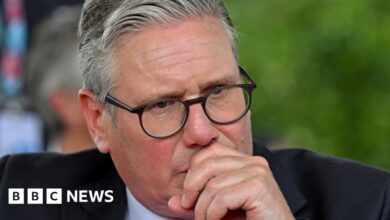Six takeaways from Keir Starmer’s ‘plan for change’
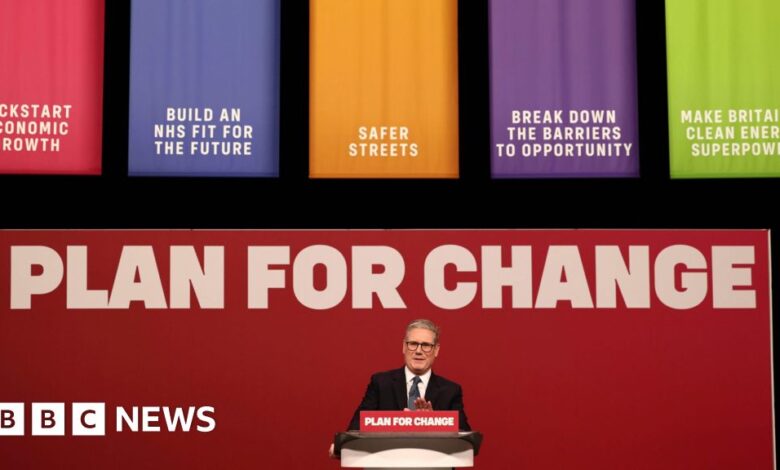
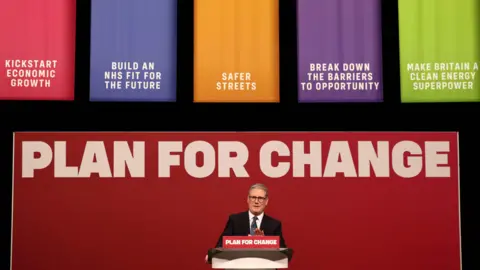 PA Media
PA MediaSir Keir Starmer has set out his “plan for change” – six “milestones” he wants the voting public to measure his government against at the next election.
Here are six key points from the PM’s speech and the Q&A afterwards.
What are the milestones?
All of the milestones are to be completed by the next general election, likely in 2029 – and in the case of clean power, to be “on track” for the 2030 deadline.
The targets on housebuilding, NHS waiting lists, and school-readiness apply to England only.
Recruiting more police is for England and Wales, while clean power and raising household income are UK-wide.
They are:
- Putting more money in the pockets of working people
- Building 1.5m homes and fast-tracking planning decisions on at least 150 major infrastructure projects
- Treating 92 percent of NHS patients within 18 weeks
- Recruiting 13,000 more police officers, special constables and PCSOs in neighbourhood roles
- Making sure three-quarters of five year olds are school-ready
- 95% clean power by 2030
Not to be confused with missions, foundations and first steps…
It’s easy to become confused when Sir Keir talks about what his government wants to do.
As we understand it, the six “milestones” set out today are things he wants voters to judge the government against by 2029, when the next election is likely to be held.
They follow the six “first steps” he set out in May, just before the general election was called.
The six milestones are ways to measure the five missions he set out in February 2023.
The missions – like building an NHS fit for the future – are meant to be the driving purpose for the government. These are what civil servants have been ordered to prioritise.
All of this is built upon three foundations – economic stability, secure borders and national security, according to Sir Keir.
95% clean power by 2030
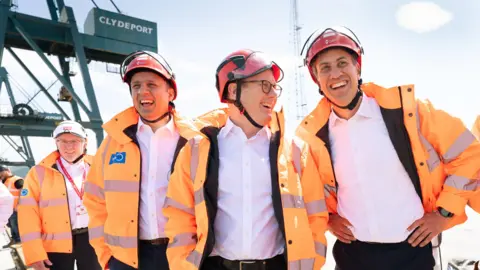 PA Media
PA MediaThe prime minister said being “on track” for 95% clean power by 2030 was one of his milestones.
But before and during the election, Labour constantly spoke about “zero carbon electricity by 2030” – and this was what the party’s manifesto promised.
Sir Keir denied he was rowing back on 100% zero carbon, telling reporters that the “clean energy pledge is today exactly what it was in the election” and “there was always going to be a mix [of energy sources]”.
Is he right?
The 95% clean power figure follows advice from the National Energy Systems Operator (NESO), which recently said a clean power system is one where demand is met by “mainly renewables, with gas-fired generation used rarely to ensure security of supply”.
It says gas should “provide less than 5% of Great Britain’s generation in a typical weather year”.
Two years ago Sir Keir also acknowledged that fossil fuels may be needed as a “fall back”.
So while the 95% clean power does seem consistent with official advice and concessions in the past, it is the first time that figure has been used by the prime minister.
Warning for ‘tepid’ civil servants
One of the most striking things about the PM’s speech was how much of it was aimed at shaking up the civil service.
Too many in Whitehall, he said, were “comfortable in the tepid bath of managed decline”.
Amid plenty of frustration at the top of his administration about their capacity to drive change, the PM said “mission-led government” was not just about delivering changed public services, but also about changing the nature of government itself.
He said he would make no apologies for fixing this.
“Make no mistake, this plan will land on desks across Whitehall with the heavy thud of the gauntlet being laid down.”
Migration target not a milestone
Immigration did not feature in the PM’s milestones and he was pressed repeatedly by reporters about this.
He said both legal and illegal migration would be driven down with “a serious plan”, including measures “to smash the gangs that are running the vile [small boats] trade”.
However, migration was not one of his milestones, he said, because cutting it was one of the “foundational things that a government must do”.
Asked why he was not offering the public a figure to measure performance on this, he replied that he was not going to put an “arbitrary number” on it.
Feeling better off (or not)
Labour has not dropped its commitment for the UK to have the highest sustained growth in the G7 – despite speculation that it was being quietly ditched.
But Sir Keir now wants to talk about it in a way that he thinks will mean something to the average voter.
The key test at the next election, he believes, is whether voters feel better off or not.
The measure of this will be something called “real household disposable income” (RHDI).
But he has not set a target for how much it should go up by, leading some to suggest it was meaningless.
The independent Office for Budget Responsibility has already predicted RHDI will rise by an average of 0.5% per year in this Parliament, 3.5% overall.
Sir Keir sidestepped reporters’ questions, insisting standards of living had fallen under the Conservatives – and that people knew when they were better off.
That had been tested in July’s general election, he added, saying people on their doorsteps across the country had told him they felt worse off.
But during the Conservative government of 2019-2024, real household disposable income did technically increase, by an average of 0.3%.


